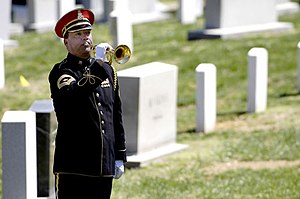This article has multiple issues. Please help improve it or discuss these issues on the talk page. (Learn how and when to remove these template messages)
This article does not cite any sources. Please help improve this article by adding citations to reliable sources. Unsourced material may be challenged and removed.Find sources: "Military rites" – news · newspapers · books · scholar · JSTOR (December 2009) (Learn how and when to remove this template message)
The examples and perspective in this section deal primarily with the English-speaking world and do not represent a worldwide view of the subject. You may improve this section, discuss the issue on the talk page, or create a new section, as appropriate. (April 2023) (Learn how and when to remove this template message)
(Learn how and when to remove this template message)


Military rites are honors presented at a funeral for a member of a military or police force. These rites, which are performed (usually) at the burial, include the firing of rifles, presenting of a flag and or bugle calls. In Australia and New Zealand a Poppy Service is often held for members of the Armed Forces. This includes a short reading by a member of the Returned Services League of Australia or, in New Zealand, the Returned Services Association, the laying of red poppies on the coffin by all present, the playing of the Last Post (or Taps in the United States), Reveille, and recitation of the Ode of Remembrance.